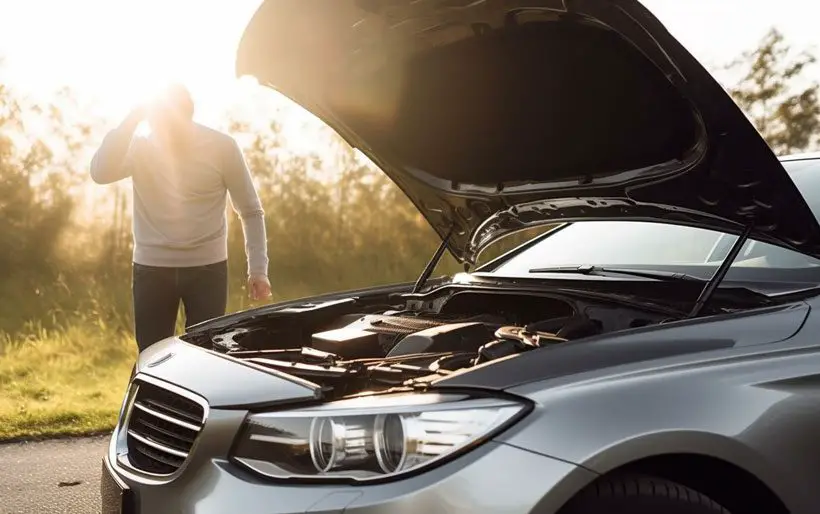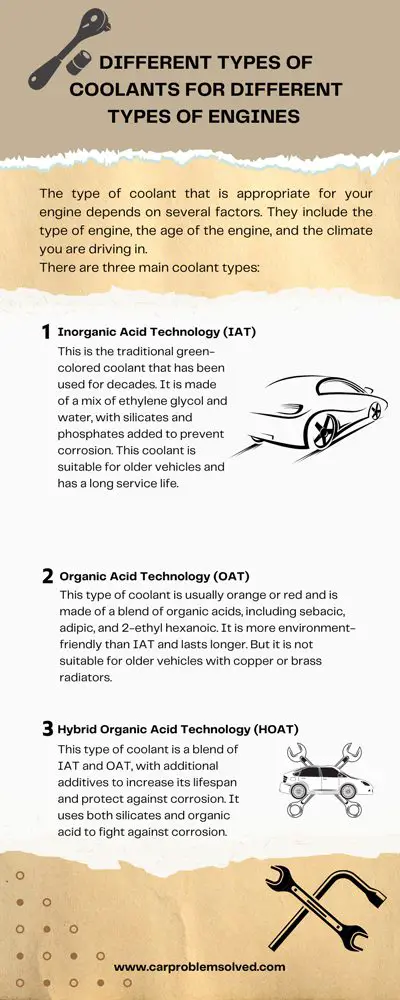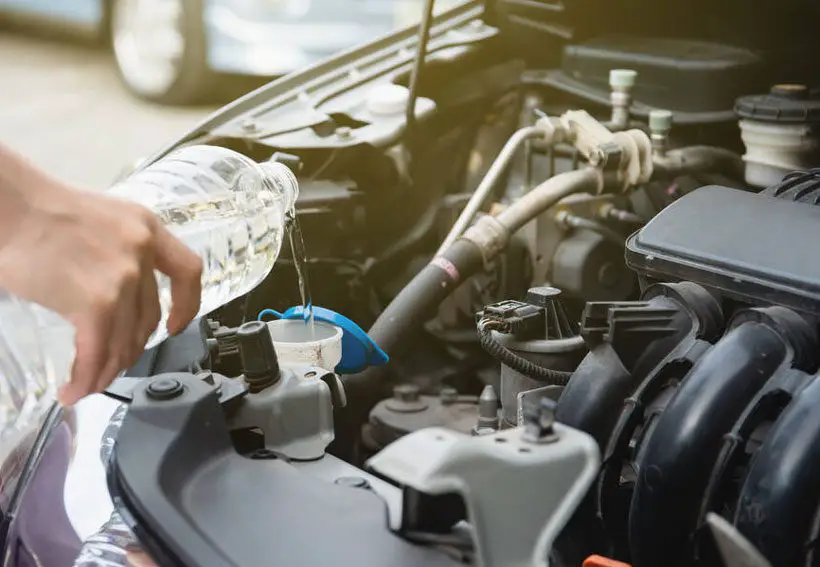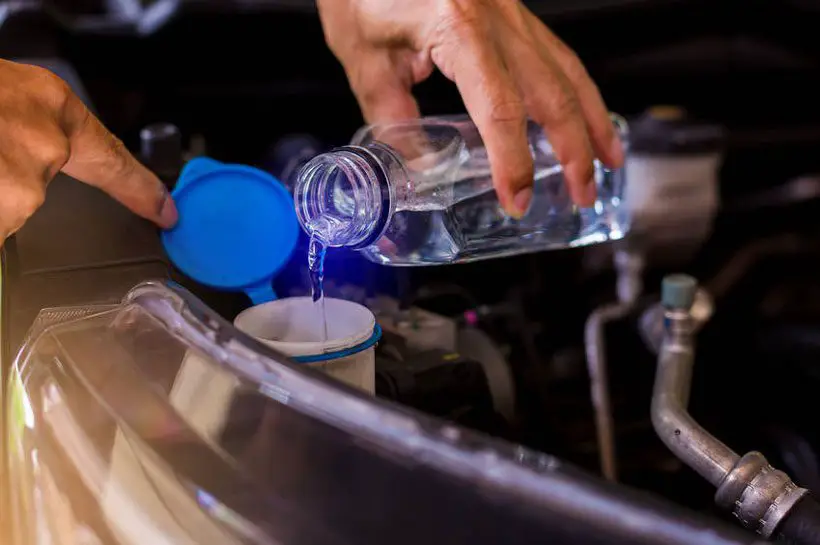Adding water to coolant in cars’ engines is a common practice when you need to top up the coolant level among many car owners. Coolant is responsible for keeping your engine cool and preventing it from overheating.
However, you may be wondering if it’s okay to add water to the coolant in the radiator. The answer is it depends on the situation. In some cases, water addition to coolant can be beneficial, while in others, it can cause problems.
In this article, we will explore the pros and cons of adding water to the coolant. We’ll provide tips on how to maintain your car’s cooling system to avoid any related issues. Read on to learn everything about adding water to coolant.
The Importance of Coolant in Preventing Engine Overheating
Keeping your car’s engine at an optimal temperature is vital for ensuring its optimal performance. One of the key components in maintaining the right temperature is the coolant. Coolant prevents engine from overheating in several ways such as-

Regulates the Engine Temperature:
The engine in your car generates a lot of heat when it runs. To prevent it from overheating, your car’s cooling system is designed to regulate the temperature by circulating coolant through the engine. Coolant is a mixture of water and antifreeze. It has better capacity to absorb and dissipate heat. Accordingly, regulate temperature effectively.
Lubricates Water Pump:
In addition to its primary functions, coolant also helps to lubricate the water pump, which circulates the coolant throughout the engine. Without proper lubrication, the water pump can wear out quickly and fail, leading to overheating and other problems.

Different Types of Coolants for Different Types of Engines

The type of coolant that is appropriate for your engine depends on several factors. They include the type of engine, the age of the engine, and the climate you are driving in.
There are three main coolant types:
1. Inorganic Acid Technology (IAT)
This is the traditional green-colored coolant that has been used for decades. It is made of a mix of ethylene glycol and water, with silicates and phosphates added to prevent corrosion. This coolant is suitable for older vehicles and has a long service life.
2. Organic Acid Technology (OAT)
This type of coolant is usually orange or red and is made of a blend of organic acids, including sebacic, adipic, and 2-ethyl hexanoic. It is more environment-friendly than IAT and lasts longer. But it is not suitable for older vehicles with copper or brass radiators.
3. Hybrid Organic Acid Technology (HOAT)
This type of coolant is a blend of IAT and OAT, with additional additives to increase its lifespan and protect against corrosion. It uses both silicates and organic acid to fight against corrosion.
It is suitable for newer vehicles with aluminum radiators and is often pink or purple in color.
It’s important to check your owner’s manual to determine which type of coolant is recommended for your vehicle. Using the wrong type of coolant can cause damage to your engine and cooling system.
Here’s a table summarizing the main differences between the three types of coolant.
| Coolant Type | Color | Suitable For | Lifespan |
| Inorganic Acid Technology | Green | Older vehicles with copper or brass radiators | 2-3 years or 30,000-50,000 miles |
| Organic Acid Technology | Orange or Red | Newer vehicles without copper or brass radiators | 5 years or 100,000 miles |
| Hybrid Organic Acid Technology | Pink or Purple | Newer vehicles with aluminum radiators | 5 years or 100,000 miles |
Pros of Adding Water to Coolant
While it is generally not recommended to add water to coolant, there are some situations where it may be necessary or beneficial. Here are some advantages of adding water to coolant.

Readily Available
Water is easily accessible and can be found almost anywhere, making it a convenient alternative to coolant in emergencies. For example, if you’re on a long road trip and your engine overheats, you may not have access to the coolant. But you can always find a source of water to help cool down your engine.
Inexpensive
Compared to coolant, water is significantly cheaper, which can be a deciding factor for some car owners. Adding water to your coolant system can save you money in the short term, especially if you need to top off your coolant frequently.
Cons of Adding Water to Coolant
While putting water in the coolant may seem like a simple solution, there are several downsides to consider. Here are a few of the most significant drawbacks.

Dilutes Effectiveness of Coolant
Coolant is designed to have specific properties, including a specific boiling point and freezing point, to protect your engine in extreme temperatures.
By adding water, you can dilute the concentration of coolant in your system, which can affect its ability to protect your engine. This can cause your engine to overheat.
Water Can Cause Rust and Corrosion
While coolant contains rust inhibitors, water does not. By adding water to your coolant system, you’re introducing a potential source of rust to your engine.
Over time, this can cause damage to your engine’s components, leading to leaks and other problems. It’s important to use coolant with the proper rust inhibitors to prevent this type of damage.
Note: While water may seem like a convenient and cost-effective alternative to coolant, the potential risks make it a less-than-ideal solution for most situations.
Factors to Consider When Adding Water to Coolant
If you do decide to add water to your coolant system, there are a few important factors to consider:

Water quality
The quality of the water you use can affect the effectiveness of your coolant system. Hard water, for example, can leave behind mineral deposits that can clog your engine and reduce coolant flow. It’s best to use distilled water or water that has been filtered to remove impurities.
Concentration
It’s important to maintain the proper concentration of coolant in your system to ensure it can effectively protect your engine from extreme temperatures. If you add water, be sure to check the concentration of your coolant mixture and adjust it as needed.
Climate
If you live in a hot climate, adding water to your coolant system can increase the risk of bacterial growth, which can lead to clogs. In cold climates, water can freeze, which can cause damage to your engine. So, consider the climate in your area before adding water to your coolant system. In extreme weather, it would be better to avoid adding water.
Alternatives to Adding Water to Coolant
Now, if you’re concerned about the drawbacks of adding water to the coolant in the radiator, there are alternative options available. Two common alternatives are:

Using premixed coolant
Premixed coolant is a ready-to-use product that doesn’t require any mixing or dilution. It typically contains a blend of water and coolant concentrate in the correct proportions for your engine.
While it’s more expensive than mixing your coolant, it eliminates the risk of improper mixing. Also, it ensures a consistent concentration throughout the system.
Using concentrated coolant
This is a more economical option that requires you to mix it with water before use. However, unlike adding straight water to your system, the coolant concentrate is designed to mix with water to create a balanced mixture. It provides adequate protection against overheating and rust/corrosion.
Preventive Maintenance Tips for Avoiding Coolant-Related Problems

To avoid coolant-related problems it’s important to perform regular maintenance. Here are a few tips for you.
- Regular Maintenance: Regularly scheduled maintenance is key to ensuring that your engine and coolant system are in good working order. Follow the manufacturer’s recommended maintenance schedule and have your vehicle serviced by a qualified mechanic.
- Coolant System Checks: Inspect your coolant system regularly for leaks, cracks, or other damage that could lead to coolant loss or overheating. Look for signs of corrosion or rust, and take solution measures to the issues.
- Monitoring Temperature Gauge: Keep an eye on your car’s temperature gauge. Be alert to any signs of overheating, such as steam or smoke coming from the engine.
Conclusion
The choice of whether to add water to the engine coolant in your car is not an easy one. Water has some disadvantages even though it is a cheap and widely available alternative to coolant. Water can weaken the efficiency of the coolant and lead to rust and, eventually corrosion.
However, regular maintenance and preventive measures are essential for keeping your engine running smoothly and avoiding coolant-related problems. So take care of your car’s coolant system and enjoy a safe and smooth ride!
